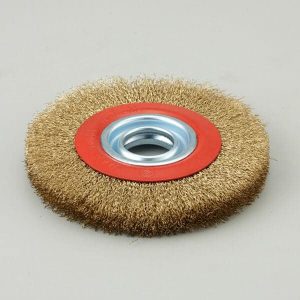
The disc brush is a nylon abrasive brush tool for surface treatment and deburring of machined parts. They have a unique combination of ceramic and silicon carbide abrasives to minimize burrs and effectively improve the surface and help you improve part quality and consistency, but what type of tool do you need for your application?
BINIC offers disc brushes in different styles and sizes. But there there are four main factors to consider:
Dressing length, disc speed, grit size, and coolant usage.
For rougher surfaces, you may also need smaller diameter tools.
1.Trim length
Disc Brushes-Turbine disc brushes have flexible nylon abrasive filaments that adhere to a fiber reinforced thermoplastic substrate. The brush tool’s filaments or bristles work like a soft file, wiping the surface of the workpiece. For better surface finish, use a disc brush with longer bristles. For rougher surface finishes, use discs with shorter filaments.
Disc speed
The optimal RPM for nylon grinding discs is a function of various product specifications and operating conditions. However, in general, higher spindle speeds are recommended for better surface quality. For rougher surfaces, lower spindle speeds can be used.
granularity
In addition to trim length, grit size is another product specification that helps determine the best RPM. Particle size is also a key consideration for obtaining a finer or rougher surface finish. In general, larger particle sizes result in finer surface effects. A smaller grain size results in a rougher surface, but you may need to use a coarser grain size tool before switching to a higher grain size tool to get a finer surface if you need a lot of work.
Use of coolant
The disc brush can be used with or without coolant. However, the filament used with the coolant can spin faster without overheating and soiling. For better surface quality, use a disc with a coolant (wet). The flow-through blade holder disperses coolant from the center of the disc brush rather than from the edges, and is lightweight. For rougher surfaces, use a dry disc.
BINIC-Wire brush support – If you have questions about these products or any abrasives, our sales and technical experts will be happy to help you. You can send a message in the contact form below.
Other people also read:
Wire Brush Troubleshooting Guide
Pipe wire brush-Tips for preparing and cleaning pipe welds
Surface treatment tips for barbed wire brushes
